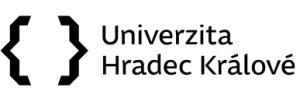This course wants to trace main paths of political, social and legal development of Chinese society from the start of the
last Chinese dynasty in 1644 until 2012. Emphasis will be put on the detailed historical development of three consecutive
eras. The dynastic era, where many structural features of today's Chinese society and politics were firmly set in place,
however mainly by incorporated centuries lasting traditions of rule and personal conduct. Then the focus of the course will
move to the turbulent years of the Chinese republic (1912-1949). The last and most comprehensive part of the course will
cover the rule of the Communist Party of China. Great deal of the lectures will be devoted to discussions of the differences
between Western and Chinese political and social development; their different understanding of the role and substance of
political power and also the problem of how the rule of the people (strongly featuring in Chinese and Western thought)
should be institutionally maintained.
1. Introduction
2. Chinese World 1000 BC?1644 AD
3. The Last Dynasty ? Pros and Cons of the Qing Rule
4. Threats from the Outside - The West vs. the Qing
5. From the Xinhai Revolution to the ?Jiangxi Soviet? (1911?1934)
6. Japan, the Second World War and the Struggle for China (1937?1949)
7. The birth and first years of the PRC (1949?1958): Building the Party-State
8. Chinese Foreign Policy from the 1950s to 1970s
9. Great Leap forward and its demise (1958?1965)
10. Cultural Revolution and its aftermath (1966?1976)
11. From Deng Xiaoping to Jiang Zemin ? the Great Opening Up (1978-2001)
12. The Eras of Hu Jintao and Xi Jinping (since 2002) I.
13. The Eras of Hu Jintao and Xi Jinping (since 2002) II.
- Učitel: Stanislav Myšička
